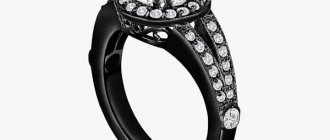What to bring from Turkey as a gift
I would bring something edible from Turkey as a gift. Souvenirs, magnets, figurines depicting beautiful views are unlikely to be of great value to those who have not seen these places with their own eyes. But the food will definitely come in handy.
I suggest this list:
- Olives (black, green).
- Handmade soap (olive, fruit).
- Towels (not bed linen, as it is easy to get the bed size wrong).
- Spices (if the person you are giving it to definitely loves to cook and does it skillfully, knows how to handle different spices. So that turmeric does not gather dust somewhere in the depths of the cupboard).
- Cheese. Before purchasing, you should check the expiration date so that the cheese reaches the recipient’s refrigerator.
- Baklava and Turkish delight. Before giving, warn that neither one nor the other can be stored in the refrigerator, and it is better to eat it in the coming days. A large box of sweets is a great gift for colleagues at once.
- Pistachios.
It is better to bring something individual like facial care products or clothes if you are 100% sure of the skin type, clothing size and that the person needs it.
You can bring cosmetics and sweets as a gift to a girl from Turkey. For the guy - a man's robe, olives.
Now let’s try to break down purchases into a budget. Even for 100 liras you can bring gifts to everyone!
What to buy with 100 Turkish lira:
- Olives (10 liras).
- Packaging of cheese (10 liras).
- A box of baklava (30 liras).
- Set of spices (20 liras).
- Towel (30 lira).
What to buy with 200 Turkish lira:
- Discounted bed linen set (150 liras).
- Towel (30 lira).
- Two packages of olives (20 lire).
What to buy with 500 Turkish lira:
- Bed linen set (200 liras).
- Two towels (60 liras).
- Robe (200 liras).
- Box of baklava (30 liras).
- Olives (10 liras).
What to buy with 1000 Turkish lira:
- Two sets of bed linen (400 liras).
- Robe (60 liras).
- Set of cosmetics, soap (200 liras).
- Two bottles of pomegranate wine (120 liras).
- 2 liters of homemade olive oil (60 liras).
- Fruits (50 liras).
- A kilogram of baklava and the same amount of Turkish delight (100 liras).
- Cheese (10 liras).
When you go to a Turkish market or a store, you want to buy everything. But don’t rush: in the first days of your vacation, it’s better to refrain from shopping, go to different places, compare prices and quality.
Also, do not give in to impulse and buy on the advice of a hotel manager or guide during an excursion - in two days you will not even remember about these goods. And most often they sell at a premium based on your sparkling eyes, emotional excitement during the excursion and the fact that when you went on a trip, you took money with you that you are ready to spend.
Silver jewelry from the “Magnificent Century” series
silver oriental jewelry made of combined metals
“Magnificent Century” series - jewelry in the style of the Ottoman Empire! This series of jewelry is made based on the famous series. After the release of the series, the Turkish Ottoman style quickly became fashionable and has been at its peak for several years. This collection pleased not only fans of the series - but also lovers of vintage oriental style and luxury jewelry - copies of antique jewelry, the motives for which were collected in various museums around the world. Natural materials were used - natural semi-precious stones, silver, copper, bronze, brass. All these stones and metals are very beautiful in combination. Magnificent replicas of unique jewelry created by the hands of ancient masters can now decorate the hand of every woman. Of course, large rubies and emeralds are replaced by colored agates and jades, laboratory corundums imitate transparent rubies and sapphires, laboratory quartz serves as amethyst, topaz and other transparent gems, and diamonds are zirconium cubes, but nevertheless, these jewelry retained a unique oriental flavor, richness colors, shine of oriental luxury. The combination of bronze that successfully imitates gold and 925 sterling silver looks stylish; some products use aging to look vintage. Inserts made of rose and yellow gold imitate copper and bronze with a special coating, but overall this original and inexpensive piece of jewelry looks like an antique oriental jewel. A bright and elegant item that looks like antique gold in different colors with precious stones and, due to its multicolored appearance, is suitable for almost any wardrobe. It looks original, stylish and expensive. Due to the fact that solid metals are used in products to imitate gold and not a thin gold coating, these products will delight you for decades and will never lose their charm and shine, will not lose color or tarnish, the natural oxidation of metals looks like a noble patina and is easily removed with a cleaning agent to the original shine! A few words about prices and quality of the “Magnificent Century” Dear Clients! Products in this category (Magnificent Century - Turkey) are NOT completely silver jewelry, despite what you may have read on other sites, they also do not use “gold plating” but use bronze, copper and brass parts, depending on the manufacturer and model. All Turkish manufacturers make them using the same technology, from the Istanbul Misa factory to the US-based Cupertino. These products do not contain emeralds, rubies, amethyst topazes, etc., so as not indicated in the manufacturer’s description and in descriptions on other sites are not so. A low price on our website does not mean that the products are different from analogues in other stores - this is the result of a fairly large wholesale, careful work with suppliers and a flexible pricing policy. Manufacturers and suppliers are the same. Strictly speaking, this is expensive and stylish jewelry made using silver, laboratory and natural PRECIOUS stones imitating precious and semi-precious inserts. The rather high price of these products is due to the complexity of the technological process of joining parts from different metals (different melting temperatures and other qualities). Unfortunately, most sellers do not bother to adequately describe the product - calling a composite silver-bronze product 925 sterling silver, and artificial inserts of laboratory origin - sapphires, rubies, etc. Indeed, the supplier in the product description indicates that these are rubies (sapphires, amethysts, aquamarine topazes, etc.) - but with the addition “Turkish”, using this term to define laboratory-made inserts. All stones in all products in this series, no matter where you buy them - laboratory (synthetic) quartz (aka Turkish amethyst, citrine, topaz, transparent emerald, etc.), laboratory (artificial) corundum (aka Turkish sapphire, ruby, etc.) , natural and colored natural agates, jade, aventurines are also used - both for imitation of beryls, emeralds and rubies, and honestly declared agates. All stones declared to be white topaz are simply cubic zirconia. Thus, the difference is only in the correctness of the description, the difference in price is the result of different pricing policies. A large markup does not mean higher quality or more natural inserts - ALL THINGS IN BOTH RUSSIAN AND FOREIGN (I KNOW EVEN GERMAN) STORES COME FROM THE SAME SUPPLIERS. So: All jewelry in the “Magnificent Century” series are imitations (casted as copies) of genuine gold jewelry of the Ottoman Empire, they are made of silver and yellow metal (copper, bronze), mostly copper parts are on top, in some jewelry only along the edge of the caste. They are hypoallergenic — earring arms, ring shanks, back parts of earrings and pendants — 925 sterling silver. The stones are imitation precious stones of laboratory origin, not expensive natural stones - agates, aventurines, jade. The products are supplemented with cubic zirconia, which are often glued in to imitate prongs; large stones are attached to the prongs. It is beautiful and original, it is not genuine precious jewelry with natural sapphires, rubies or emeralds
What not to bring from Turkey
Let's look at the purchases you can do without.
The principles by which the products were included in this list:
- Low quality.
- It is unlikely that you will often use this at home or will struggle to figure out how to justify the purchase and find a use for it (that is, the thing will not work 100%).
- There is a better analogue at home.
- This is a hyped product with little value.
- It tastes strange, too unusual, something that will most likely gather dust in the closet, because “it’s a pity to throw it away, it was brought from such a distance.” Or you will give it to other people because you yourself have no use for it.
Hookah
Russian hookah and tobacco are better than local ones. In a tobacco shop, under the soft light, the hookahs look great, shimmering with different colors. But in reality they are made of cheap materials, the tubes break quickly. So if you love hookah and know how to hammer it, it’s better to find something in Russia.
Local tobacco, which is sold in tourist shops, quickly burns out. And the brands AL-Faker, Nakhla and Adalya in Russia are no longer considered so progressive.
Of course, there is also high-quality hookah, but you shouldn’t look for it in tourist shops on the streets.
Hookah in a tourist shop
Colonia hand cleaner
You've probably noticed how waiters in cafes offer to freshen your hands with a scented antiseptic. This is a Turkish habit that is easy to maintain in Russia with the help of ordinary antiseptic. It is unlikely that you will carry a large bottle of colony with you or use it when you come home. You will most likely wash your hands immediately.
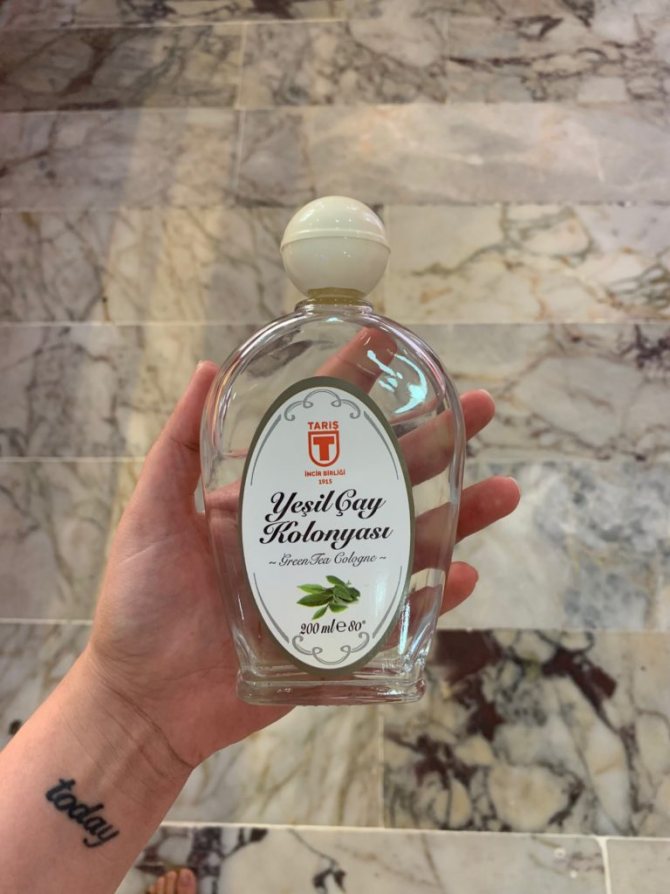
Colony with green tea aroma
Amulets against the evil eye
It makes sense to bring something like this if you deeply believe in this ritual - that some kind of amulet will protect you from bad influences. If you don’t believe me, then it will become another trinket hanging sadly on the mirror in the hallway.
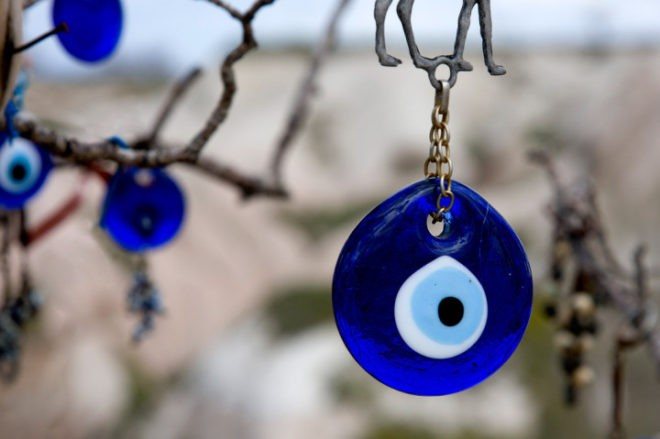
Amulet "Eye of Fatima"
Sesame halva
Sold in all supermarkets and markets. As for me, our halva is much tastier and sweeter. The local one is tasteless, even slightly bitter and very fatty - it literally oozes oil. If you tried it and liked it, great, then this is a great dessert for tea. But I wouldn't buy this without trying it. And it weighs half a kilo - a serious burden on luggage.
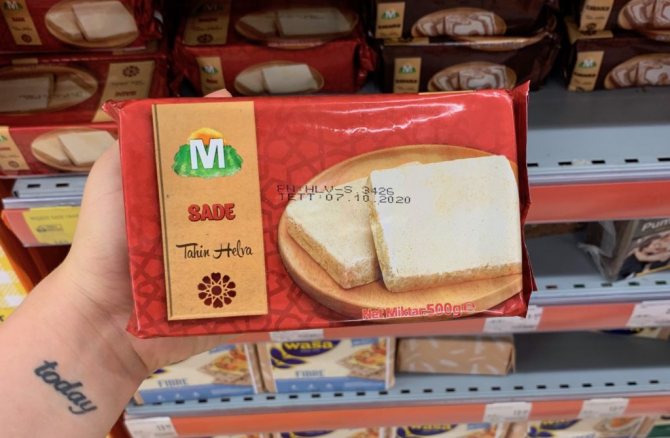
The most common halva
Stained glass lamps
They are beautiful, atmospheric and look great in a traditional Turkish interior and in a seller's shop when lit and create an incredible lamp world. But what will you do with it at home? How will it fit harmoniously into the interior of your apartment?
If it still fits in and you have an idea of where to place it and how it will complement the space, then this is a great purchase.
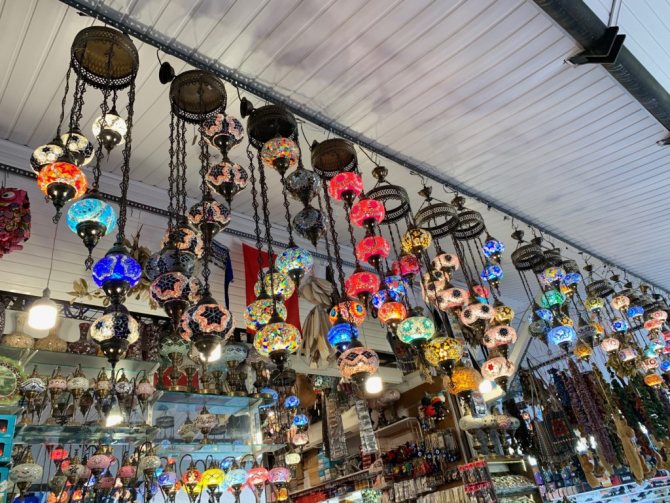
Lamps for every taste
Dishes: copper-look Turks, tulip cups, sets for Turkish coffee
As a rule, “copper cookware” has thin walls and short handles that heat up quickly. It’s inconvenient to cook in these, although they look great.
Tulip cups are small in volume, but in Russia we are used to drinking tea from larger cups, or even from mugs. The same applies to Turkish coffee cups - if you actually brew coffee regularly and serve it to a group of at least six people (standard set size), this is a justifiable purchase.
At the same time, you can find a single cup for tea and coffee and buy it to decorate the fireplace, kitchen surface, put a sprig of lavender in the container and remember Turkey. But you don't have to buy the whole set.
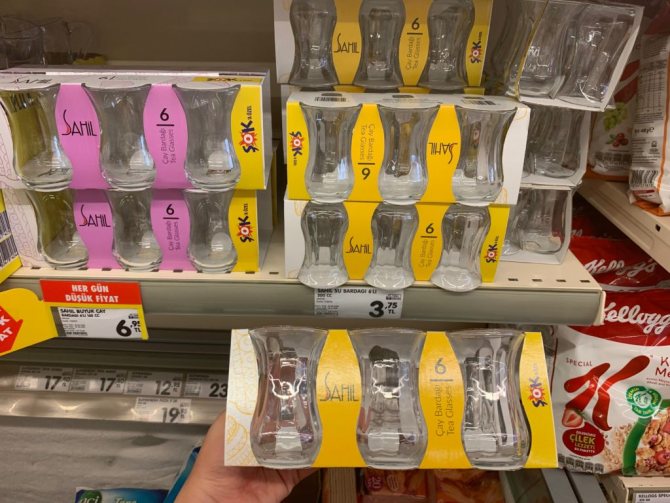
Tulip cups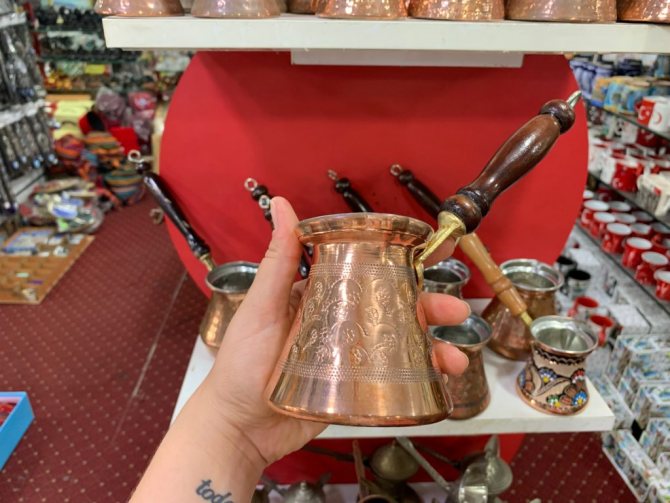
Turk with thin walls
Aniseed vodka raki
This is a local traditional alcohol, which is diluted with water when consumed. It tastes like cough medicine.
Before buying, it is better to try and understand whether you like the taste and condition after use. As a rule, after a few glasses of raki, the legs refuse to move, and you have to sit and drink water for a long time to come to your senses.
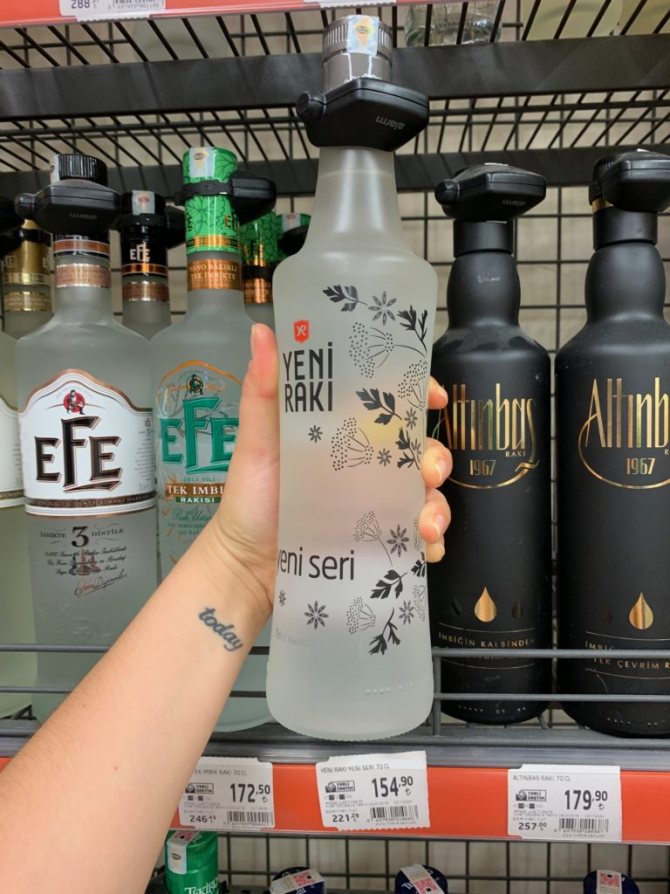
Cancers
Cheap, low quality clothes
Cheap does not mean bad, but in Turkey there are several chain stores, popular among locals and tourists, where items can withstand a maximum of 3-4 washes. This is done so that the buyer quickly becomes satisfied with the purchase and comes back as soon as possible for new goods. Therefore, when you see a T-shirt for 20 lira in LC Waikiki, think about whether you are ready to part with it in a month.
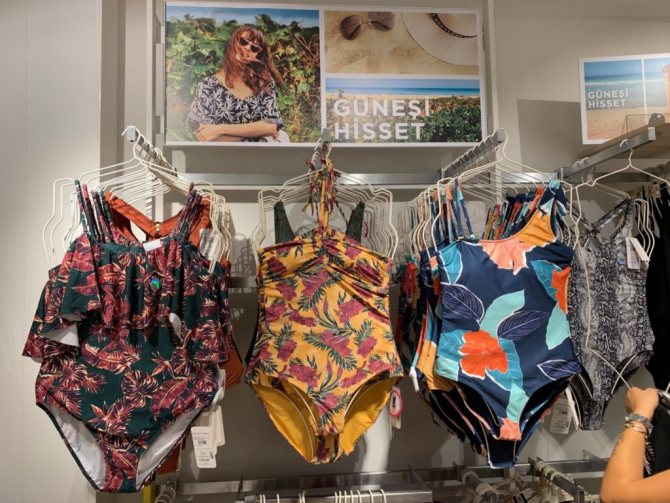
Swimwear at LC Waikiki
It is also worth paying attention to the landing. As a rule, items in chain stores are designed for one body type.
You can buy cheap clothes of normal quality in Alanya, you just need to know the places and sales. For example, it is better to buy jeans at Collins or Mavi. And you can find Levis on sale in Boyner for 100 liras (1,100 rubles) instead of 7,000 rubles in Russia.
Jewelry
It is common among tourists to buy gold or silver in Turkey on vacation. Typically, this is an unjustified purchase, since jewelry here is often made with a large number of added alloys, diluting the gold and silver. For example, sometimes copper alloy is passed off as gold.
Checklist for buying jewelry:
- To check the seller, ask for a work license and documents for the goods.
- Do not believe it if the seller claims that the product is 100% silver. Metals without impurities are not used for production.
- The fakes here are made from tombac (zinc + copper). Some fakes contain only a few gold links, while the rest contain goldine (aluminum + copper) or belgica (chrome + nickel + iron). To distinguish a fake, take a piece of precious metal with you to the store and compare both pieces of jewelry.
- Counterfeits most often have a defect. For example, when hitting a flat surface, you may hear a muffled sound that is not typical for gold.
But you shouldn’t conclude that everything is bad with jewelry in Turkey. There are manufacturers and stores that you can trust - they have a license to operate, documents for the goods and employees who can clearly advise.
“Türkiye, Alanya. shopping center ROM DIAMONDS"
Hello.
I would like to tell you a little about the so-called Turkish gold. I went to Turkey for the first time and, naturally, I had no idea that the sellers were so unscrupulous. On the very first day, a guy ran up to me and told me that there was delicious gold in that same Rum. That the first three days of the trip are completely free. Well, fired up, I went straight there. We were greeted as expected. The prices are monstrous. They sold me a ring. The ring is good. 750 standard, diamonds, and, as they called the stone then, sapphire. Let's pay attention to the so-called SAPPHIRE. It is yellow in color, a pretty pebble, and its size is surprising. But no matter how it is. Sapphire is never yellow. That's what I told the seller. To which she replied that the stone was grown artificially. Such a ring costs, at the starting price, 4500, roughly speaking. They knocked me off 50%. 2250. She called the store owner's son. This young man reduced the price to 1800. Joy “full of pants”. 30% deposit required. I left 360 dollars and arranged home delivery for the month of December. Afterwards, I thought for a long time. I decided to give up and change the ring. The money has already been paid, but there is an opportunity to simply invest the money in another ring. I came again. Again I asked what stones were in the ring. To which they answered that the ring contains pure citrine water. Girl, what were you thinking when you said it was a sapphire?! For that kind of money I will buy a real sapphire. She said that without any problems she would bring me the ring and I would think again. She immediately comes and says that the ring is already in Istanbul and I will have to meet it in Russia. I am shocked. The showdown began. The certificate did not tell me which stone was inserted when everything was done. The seller states that she could not tell that there was a sapphire. As a result, nothing can be proven. The owner of the store says that the price is quite reasonable, because there is 750 gold and diamonds. Excuse me, according to the data in the certificate it is written in black and white: hallmark 750 = 18k, D: 0.16 ct. OT: 2.38 ct. Let me explain: the sample differs in carats. 750 = 18, 900+ = 20. No questions. D is for diamond. There are only 0.16 carats of diamonds there. You can consider it a baby. OT - when I asked what it was, the seller only told me that she wrote it off on the back side. Okay, he doesn’t know, it happens. Okay, let’s assume these are the carats of that same “sapphire”. According to international prices, 750 gold per gram costs $30-40. As we ourselves see, there are not many diamonds. Citrine - price $30. Citrine itself is quartz. Petrified mineral water for such a price... Why 1800 bucks?! Let's take the same gold. What kind of bar should be worth 1800 bucks?! Then another seller started talking to me. He began to explain. He shows me the ring and says: “This is a sapphire. That ring doesn't look like a sapphire. And here is a sapphire.” It just killed me. The ring he shows me has topaz. Well, can’t I tell a topaz from a sapphire?! The ring contains a dark blue transparent stone. This is the so-called black topaz. Don't make me laugh, people. Sometimes it's better to remain silent. Well, we finally got to dessert. I approached the jeweler purely out of interest. He was collecting something, I didn’t even pay attention. I offer my hand and say: “What stone is in this ring?” On my hand is a ring bought in the same store about 15 years ago. The ring contains 100% emerald. He tells me: “peridot.” Sorry for the many rhetorical questions, but haven’t you seen olivine?! I'm honestly pissed. I spat on these 360 bucks and went home. Paying for a beautiful semi-precious pabrikushka is more than stupid. Draw your own conclusions. Dear girls, Be very vigilant. And happy shopping. Search prices for tours and hotels in Turkey
Reviews from tourists about Turkey
What is prohibited to export from Turkey
- Carpets that are over 100 years old. Therefore, when exporting a carpet to customs, you must present a certificate for its purchase.
- Coins, antiques from the reign of the Ottomans.
- Large corals and shells without a purchase receipt.
- Daggers, knives and sabers, antique pistols, all types of fake weapons.
- Jewelry worth more than $15 thousand.
- Alcohol is more than a liter per person (a liter is possible, but no more).
- Souvenirs worth over $1000. You can take out more, but it will be regarded as a business and the appropriate documents will be required.

Turkish style carpets
Summary
- Before you buy, go to several places and compare prices. Buy a few days after your arrival.
- Buy on your own, without guides - as a rule, they have an agreement with the stores where they take you. So it will be more expensive.
- Do not buy goods in markets or tourist shops - you will overpay.
- If the price of a product is indicated in dollars/euros, most likely it is a tourist place, it is better to buy where the prices are in lira.
- If there are locals in the shop, that's good. This means that the quality of the goods there is high.
- Before buying a souvenir, it’s worth asking yourself a question: maybe it’s better to take a photo as a souvenir and leave it at that?
If you are going on holiday in Turkey, do not take a lot of things with you - you will need space in your suitcase for shopping. No one has ever left Turkey empty-handed 

Happy shopping! Tell us what you buy in Turkey and what you decide to bring.
